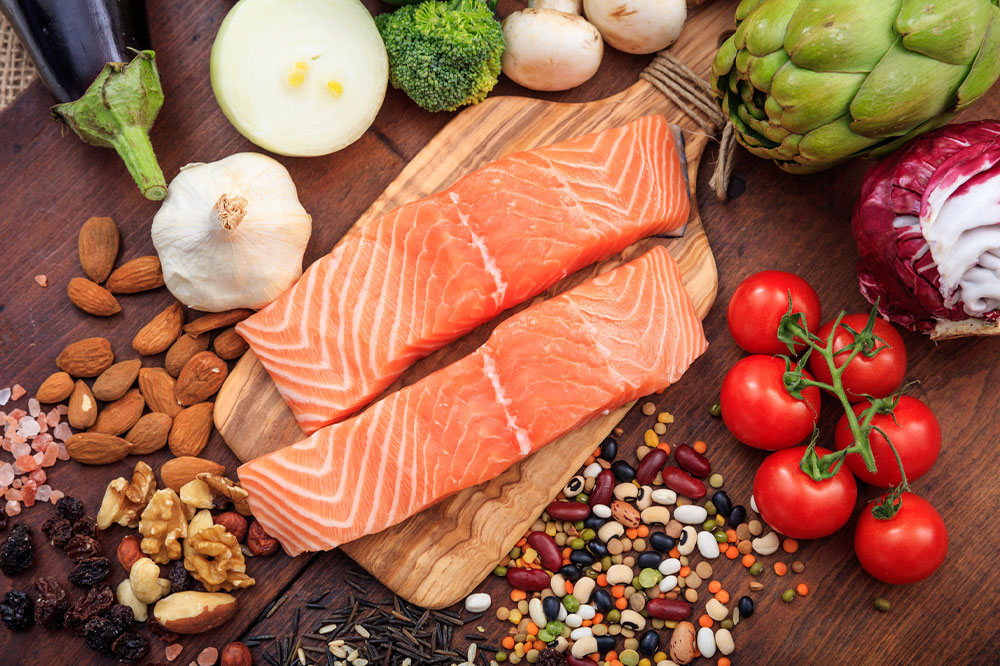3 tips to help manage Parkinson’s disease

Parkinson’s disease is a chronic progressive nervous system disorder that affects over 10 million people worldwide. The first signs of the disease typically include unintended or uncontrollable movements, stiffness, and difficulty with balance and coordination. The exact cause of Parkinson’s isn’t known yet, but low levels of dopamine in the brain may be responsible for its development. Here are some treatment options, meal plans, and lifestyle changes that can help manage Parkinson’s disease:
Explore treatment options
Doctors typically explore several treatment methods to manage Parkinson’s disease symptoms. These include:
Carbidopa-levodopa
This combination treatment is one of the most effective remedies for Parkinson’s disease. It can help combat common symptoms such as shakiness, stiffness, and difficulty in moving. While levodopa helps replace the missing dopamine, carbidopa helps prevent levodopa’s side effects—nausea and vomiting. Another function of carbidopa is to prevent levodopa from getting converted into dopamine too early, so more of it can enter the brain. This combination treatment is sold under the brand name Rytary®, among others. Rytary® is an extended-release treatment that reduces the amount of “off” time each day in people with Parkinson’s while improving the performance of motor functions. Some common side effects include nausea, dizziness, headache, and insomnia.
Opicapone
Opicapone is a catechol-O-methyltransferase (COMT) inhibitor and is used together with carbidopa and levodopa to lessen the total amount of “off” time in those with Parkinson’s disease. The COMT inhibitor prevents levodopa breakdown, allowing more of it to reach the brain and turn into dopamine. Opicapone is commonly sold under the name Ongentys®, which has been approved by the FDA for the treatment of the disease. It’s usually taken orally once a day. Potential side effects include uncontrolled dizziness, hallucinations, constipation, and low blood pressure.
Foods to eat and avoid
Making changes in your meal plans can help minimize the severity of symptoms in Parkinson’s disease.
Foods to eat
Salmon
This fatty fish has high omega-3 fatty acid content, which can slow Parkinson’s symptoms by decreasing nerve inflammation, improving neurotransmission, and slowing neurodegeneration. Omega-3s have also been linked to improved brain function, better cardiovascular health, and reduced risk of dementia.
Fava beans
Fava beans contain levodopa, the same compound found in Parkinson’s treatments. Some people believe fava beans may help ease the disease’s symptoms. However, there’s no concrete scientific evidence that suggests that this food can reduce symptoms.
Blueberries
These tiny fruits are packed with antioxidants, which can reduce oxidative stress caused by free radicals. Oxidative stress may contribute to the development of Parkinson’s, so loading up on blueberries and other antioxidant-rich foods like cherries, walnuts, and broccoli may help manage the disease.
Spinach
This leaf is packed with antioxidants and contains lots of essential nutrients, such as iron, potassium, folate, and vitamin A, C, and K. Spinach may help ease symptoms of Parkinson’s while improving overall health.
Foods to avoid
Beef
Beef is loaded with protein. While moderate amounts of protein may be fine, too much can interfere with certain Parkinson’s treatments. It’s best to speak to a doctor when it comes to protein intake, as some people may only need to change their timing of eating high-protein foods like beef.
Dairy
Dairy products have been associated with a higher risk of Parkinson’s as well as faster disease progression. Researchers are unsure why dairy products have these effects. Avoid dairy products like milk, cheese, yogurt, butter, and ice cream.
Canned foods
Canned foods, such as beans, diced tomatoes, and meat, typically contain lots of sodium or salt. Excess sodium intake can lead to high blood pressure, making Parkinson’s symptoms worse. Canned foods also come in the category of processed foods, which have been linked to a more rapid progression of the disease. In addition, these foods may lead to poor gut health, which can aggravate the symptoms.
Lifestyle changes to manage Parkinson’s disease
Lifestyle changes can vastly improve the quality of life with Parkinson’s. These changes must include:
Drinking plenty of water
It’s vital to maintain adequate hydration levels throughout the day. Water helps ease constipation, reduce weakness, and decrease the risk of dehydration, all of which commonly occur with some Parkinson’s treatments. In people with the disease, urinary frequency and urgency problems can make it difficult for them to drink enough water. However, they can set reminders or use any other technique that reminds them to drink enough water each day.
Sleeping longer and better
A good night’s sleep helps boost dopamine levels in the brain, reducing symptoms to some extent. One can also take a short nap during the day to recharge their body and mind if they’re feeling tired. However, the issue is that most people with Parkinson’s struggle to get good sleep. To improve sleep quality, practice good sleep habits, such as avoiding screens 2-3 hours before bedtime and ensuring the bedroom is cool and dark.
Exercising regularly
Regular physical activity is crucial for living well with Parkinson’s. Exercise helps improve movement, build strength, and alleviate stress, anxiety, and depression. Health experts recommend engaging in approximately 2.5 hours of physical activity each week. These activities can include brisk walking, swimming, running, biking, strength training, and stretching.
Minimizing stress
Excess psychological stress can exacerbate tremors, stiffness, and other Parkinson’s symptoms. A great way to manage stress is by practicing relaxation techniques, such as deep breathing exercises, meditation, tai chi, or yoga. Tai chi and yoga can calm the mind while improving balance and flexibility.
Patients with Parkinson’s can manage treatment costs through various Medicare programs. While most insurance options do not provide coverage for Parkinson’s disease, patients can still find a handful of Medicare plans that cover the condition. These options will provide coverage for therapies, treatments, and even services that will help address the condition and treat its symptoms.

